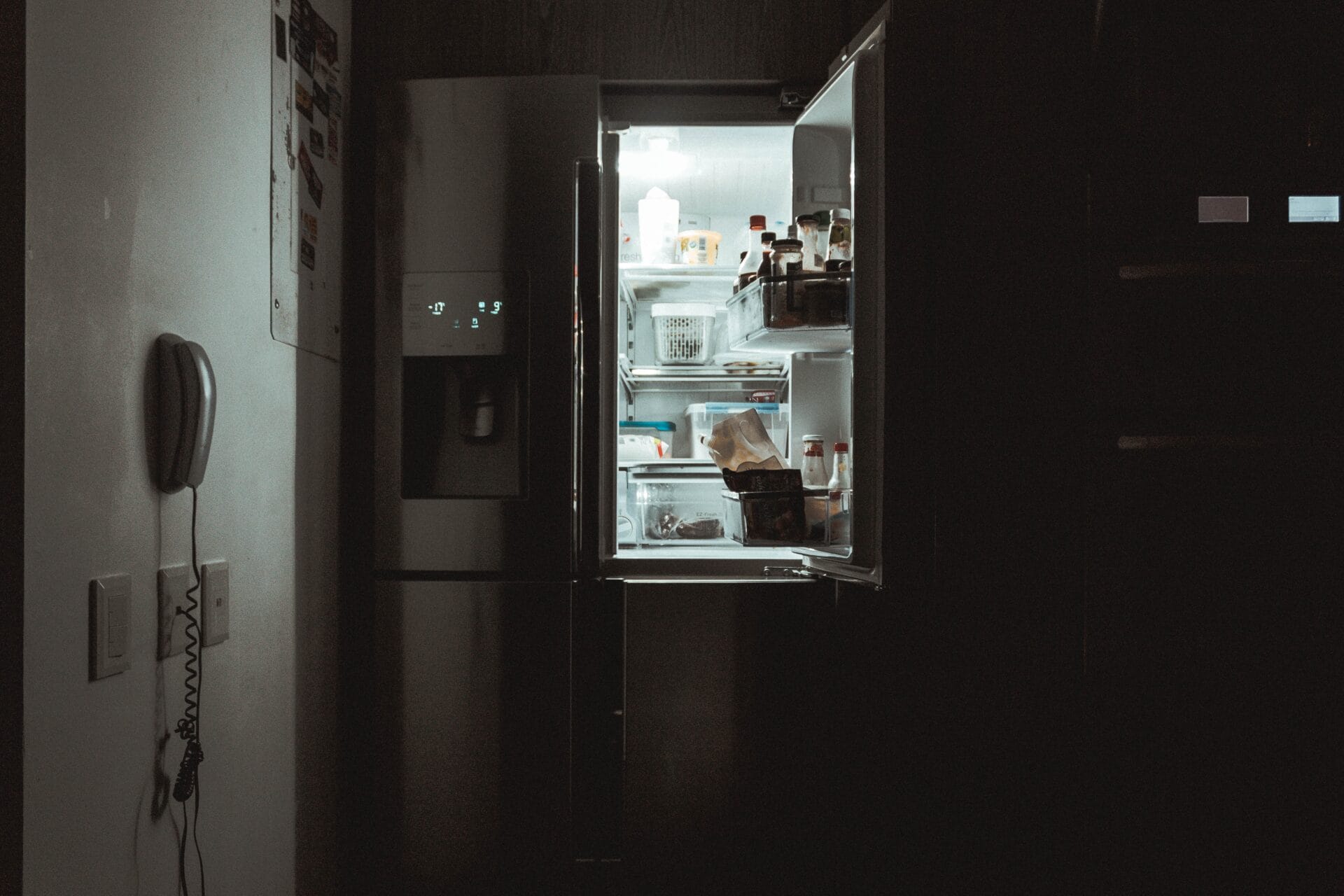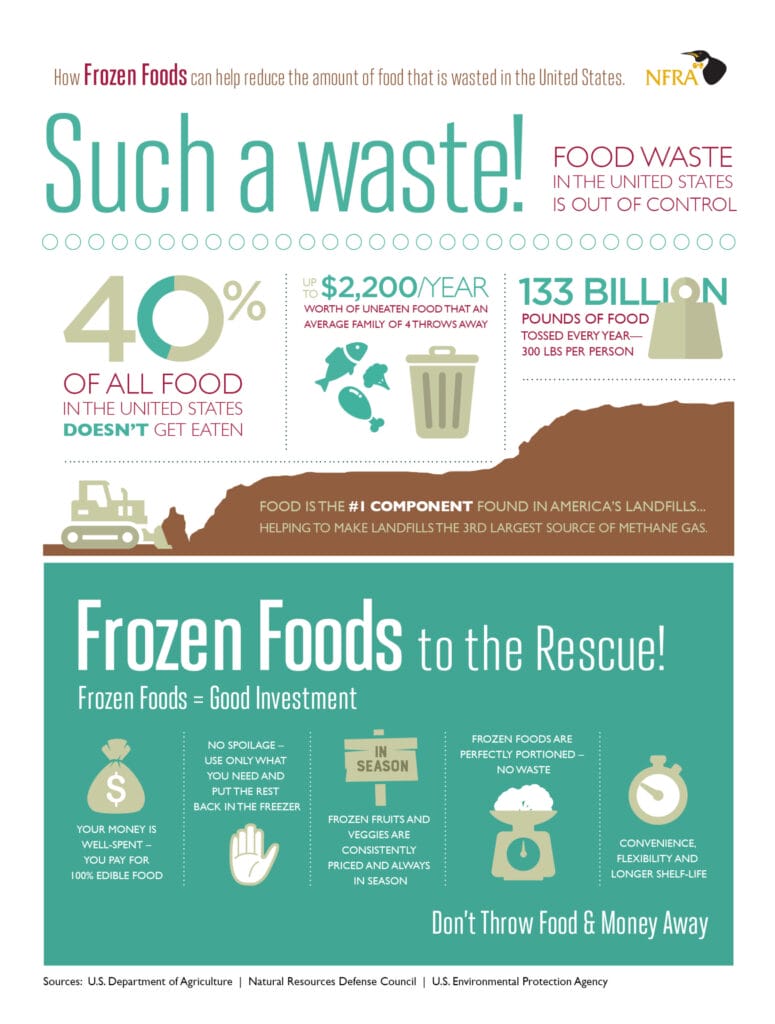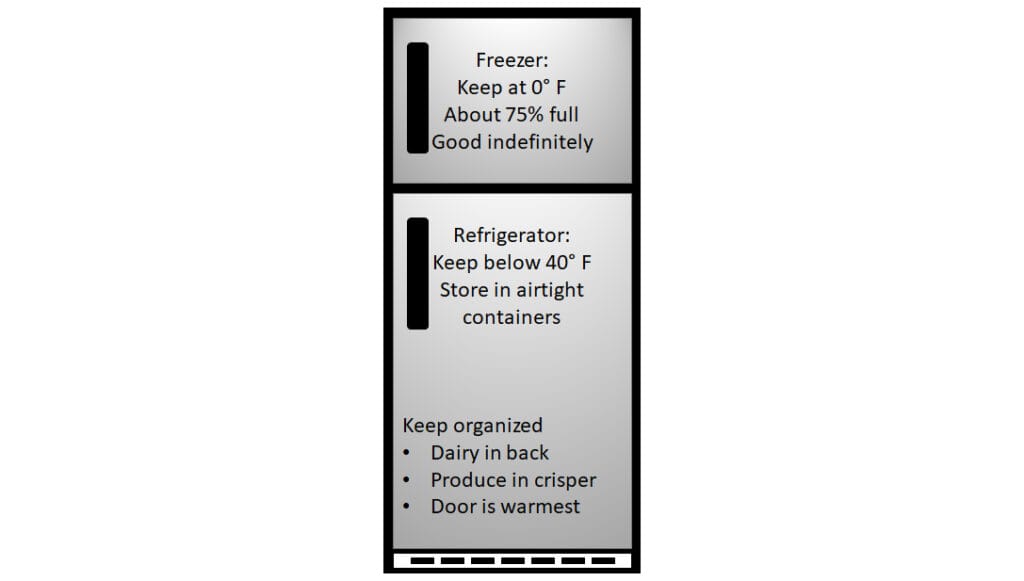
Freezer usage
Don’t get freezer-burned: keep foods tasting delicious and fresh longer, on ice!
Take a listen
Let’s start out with our fifth and final podcast, where we’ll discuss why proper freezer usage is an important tool for reducing food waste:
Take a look
Check out this video and learn about freezer storage to reduce your food waste!
View infographics


Take action
The takeaway
A freezer can be a really powerful tool to buy yourself more time before getting around to using foods that would otherwise spoil, and can even transform the ways you use certain foods (like frozen fruits in smoothies). Follow these tips to make the most of your freezer.
- Freeze almost anything (including leftovers!) – just not canned foods or eggs in the shell – for almost any duration
- Keep your freezer at 0 degrees Fahrenheit (and your fridge below 40 degrees Fahrenheit) – ice cream should feel brick hard
- Keep your freezer about 75% full and allow for air flow around stored foods
- Pack your food properly by minimizing air in their containers and labeling them before placing in the freezer
- Keep track of what’s in your freezer and where it is – don’t let it become a frozen graveyard for your food!
- Blanch or puree produce before freezing and don’t refreeze meat or seafood
Essentials
There are three steps to using a freezer properly and reaping the benefits of pressing pause on your food’s spoiling process:
Must-have tools:
- Put food into appropriate and airtight packaging, and make sure it is labeled with the date and what it is. Freezer bags, airtight glass containers, and silicone bags all will work, but get as much air out as possible, leaving a little room for liquids to expand.
- Organize your freezer so you know where to look for commonly frozen foods like veggies and fruits, leftovers, and meats. Consider labeling areas for specific foods so you can quickly take stock of what you have available.
- Maintain the temperature of your freezer at 0 degrees Fahrenheit. Consider buying and keeping a freezer thermometer in your freezer if there isn’t one built-in, as this is important for the freezer to function properly.
Helpful resources
Some additional resources can be found at the following websites: